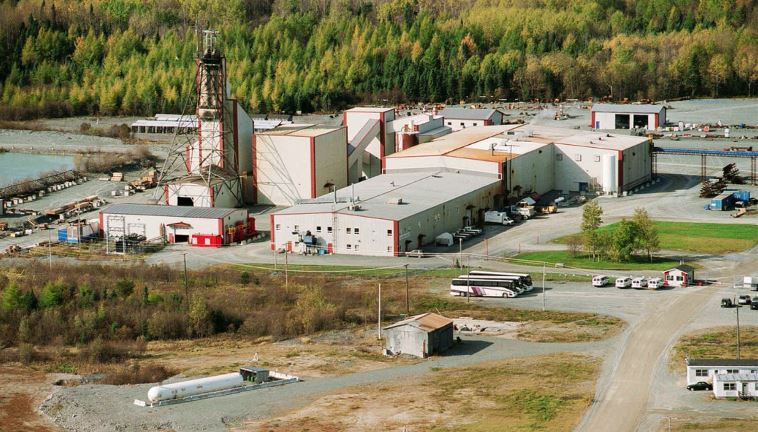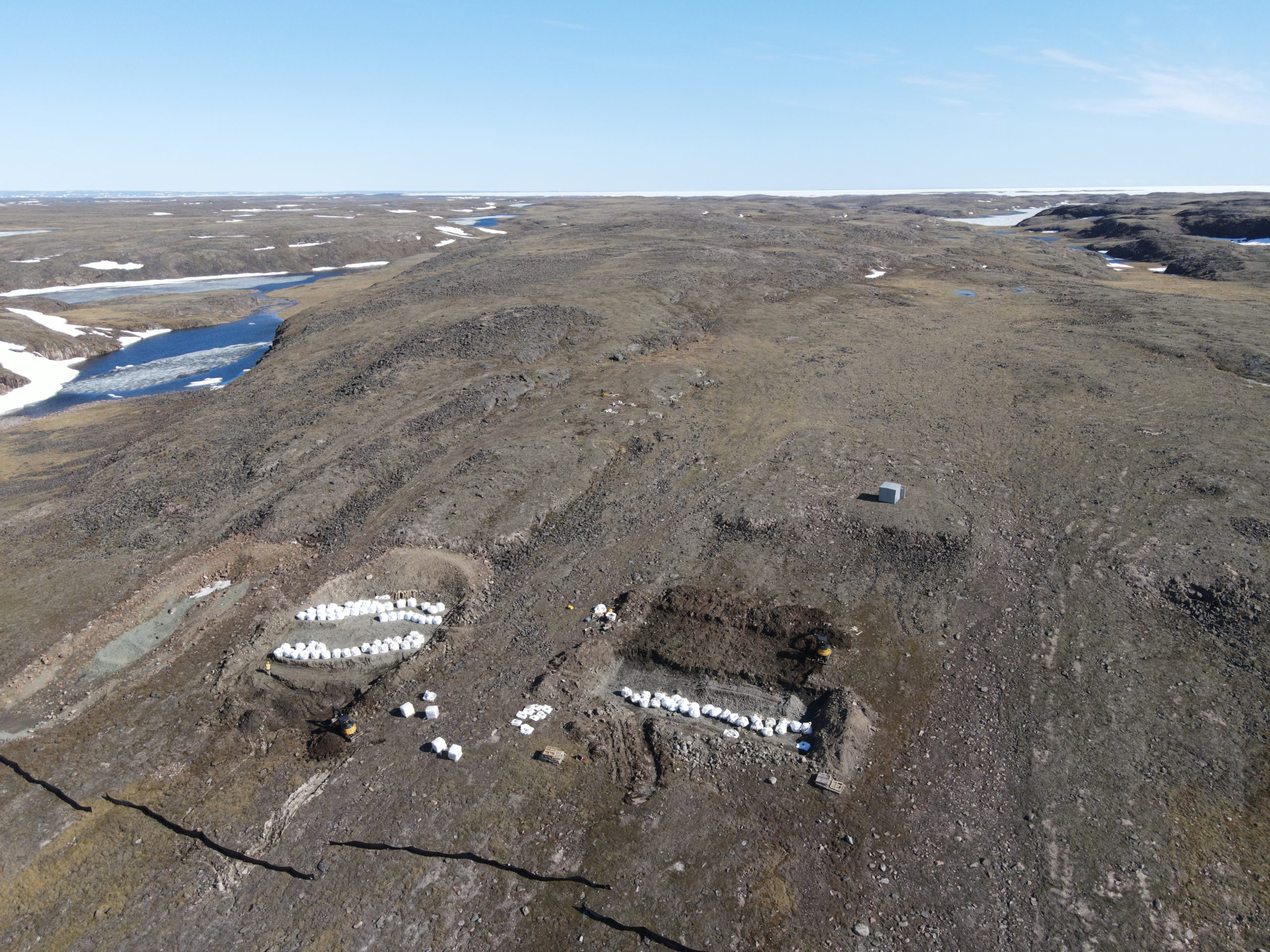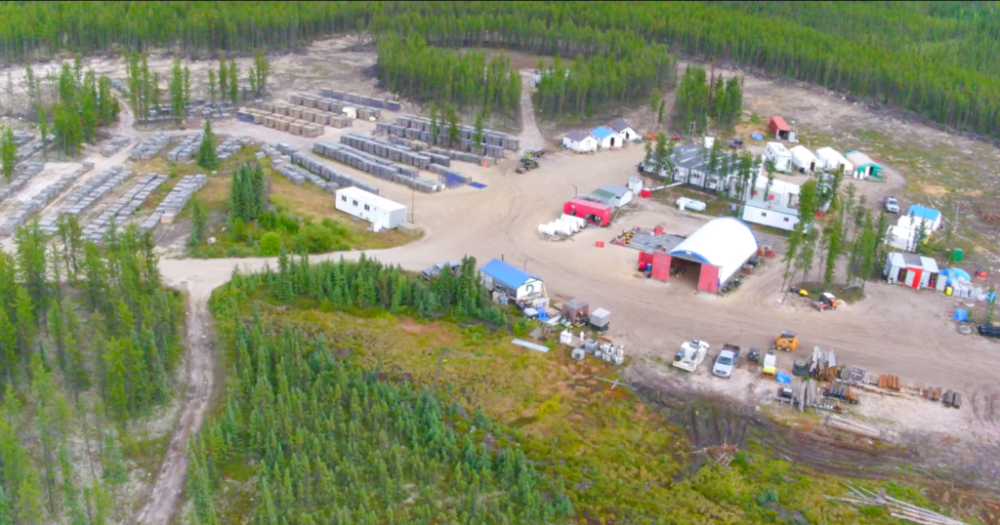Booming Business
The metal-rich Labrador Trough is a world-class iron ore mining district in eastern Canada, that has been producing continuously since 1954. This belt of Proterozoic iron formation spans the entire width of western Labrador and extends into Quebec to the north and southwest, for a distance of some 1,100 km. This article focuses on developments in the Labrador portion of the Trough.
The Labrador iron district is experiencing an unparalleled surge in growth driven by an unprecedented increase in global demand for seaborne iron ore, particularly from China.
This new activity includes major expansions of existing operations, development of new or renewed operations and advanced exploration at projects representing a pipeline of future producers.
Major long-term operators such as Rio Tinto – Iron Ore Company of Canada (IOC) and Cliffs Natural Resources Inc. have been joined by a new producer, Labrador Iron Mines Holdings Ltd., which loaded its first shipment of iron ore in June. Other projects have announced plans for production (Tata Steel Minerals Canada Ltd.) or have reported substantial new resources (Alderon Resource Corp.).
These developments are generating billions of dollars of new investment in the district and stimulating growth in employment and infrastructure. Funding for these developments has come not only from traditional sources, but also from new investors in China and India.
MINING AND DEVELOPMENT HIGHLIGHTS
- Rio Tinto has started an expansion program at its Carol Lake operation which could take iron ore production from 17 million tonnes to 26 million tonnes per annum, representing a $1 billion investment. Further expansion to 50 million tonnes per annum is under consideration.
- Cliffs Natural Resources is increasing production levels at its Scully Mine in Wabush and is working to extend mine longevity through a manganese separation process that will effectively increase crude ore tonnages amenable to processing, and yield manganese and ferro-manganese by-products.
- Labrador Iron Mines began mining and processing high-grade Direct Shipping Ore (DSO) from its Schefferville project in northwestern Labrador in the second quarter of this year.
- Tata Steel Minerals Canada Ltd. (TSMC) will begin construction this summer on its own DSO project near Schefferville.
- New Millennium Iron Corp., part owner of TSMC, has reached an agreement with Tata Steel of India to complete a feasibility study on the very large LabMag and KeMag iron ore deposits near Schefferville.
- Alderon Resource Corp. is conducting an intensive drilling campaign on its Kami project, an advanced stage iron ore exploration project in Labrador West.
Also in Labrador West, the government of Newfoundland and Labrador is evaluating the historic crown-owned Julienne Lake iron ore deposit through drilling and metallurgical studies.
ORE DEPOSIT MODELS
Several facies of iron formation occur within the Labrador Trough, reflecting variations in the nature and chemistry of conditions in which the ore beds were originally deposited. The iron formation was subsequently folded and faulted along most of its length, and is most highly metamorphosed in its southern parts.
In general, three types of iron ores are known in the Trough. In the north, near Schefferville, there are high-grade, supergene, direct shipping ores (hematite, goethite, limonite). These are amenable to low cost stripping, washing and screening to yield a saleable product. Also near Scheffer-ville are weakly metamorphosed magnetite iron formations, or taconite (LabMag, KeMag). These have yet to be commercially exploited, but large reserves are known, and a feasibility study is in progress.
The bulk of production comes from metamorphosed specularite-magnetite iron formations in the south, near Labrador City-Wabush (Carol Lake, Scully Mine operations). Folding and structural thickening has produced large deposits amenable to open pit mining; the coarse grained metamorphic texture enables easier beneficiation.
CURRENT PRODUCTION
Currently there are four major iron ore operations located in the Labrador Trough: Rio Tinto – IOC (Carol Lake), Cliffs Natural Resources (Wabush Mines and Bloom Lake), and ArcelorMittal Mines Canada Inc. (Mont Wright). The Rio Tinto – IOC operation alone has produced in excess of 1.3 billion tonnes of iron ore, and is forecast to produce about 16.4 million tonnes in 2011. Its Carol Lake operation, which accounts for about half of Canada’s total iron ore output, produces both pellets and concentrate.
Production from a fifth operation, farther north in the Schefferville area, was recently achieved by Labrador Iron Mines (LIM). LIM has 20 separate deposits of direct shipping ores in the area, which were explored and previously mined by IOC. Tata Steel Minerals Canada is also developing some of these deposits, with initial production slated for the second half of 2012.
Iron ore products from all operations are transported by rail to port facilities at Sept Isles and Pointe Noir on the Gulf of St. Lawrence, for transshipment via bulk carriers to domestic and world markets. The port at Sept Isles also has ambitious plans for expansion in the coming years.
DEVELOPING PROJECTS AND ADVANCED EXPLORATION
Also near Schefferville, New Millennium Iron (NML) has outlined two very large deposits of taconite (LabMag and KeMag) in Labrador and Quebec, respectively. NML has reached an agreement with Tata Steel Global Minerals Holdings to conduct a feasibility study in respect of these deposits. Should the outcome be successful, the parties may form a joint venture to develop one or both. If this project is developed, a significant increase in iron concentrate production of about 20 million tonnes annually could be expected and anticipated economic impacts would be substantial. NML is also exploring areas along the trend of these deposits.
In the Labrador City-Wabush area, Alderon Resource Corp. has reported an initial resource estimate for its Kami Project. Alderon is currently drilling to increase the resource and is engaged in a scoping study.
Also near Labrador City, the government of Newfoundland and Labrador has conducted a drilling program and preliminary metallurgical studies to produce an initial resource estimate for the historic Julienne Lake deposit. The property is currently held by government under Exempt Mineral Lands status.
EARLY STAGE PROJECTS
Champion Minerals Inc. is conducting a large exploration program on its Attikamagen Project in northwestern Labrador. Drilling is in progress. The project is a joint venture with Labec Century Iron Ore Inc. Champion recently announced that WISCO International Resources Development & Investment Limited has purchased an interest in the project.
Altius Minerals Corp. has acquired a large land position (>1,000 km2) covering iron formations and favourable geology between and adjacent to the producing areas of the Labrador Trough. Altius also has a joint venture with Rio Tinto Exploration Canada covering prospects in the Labrador City area.
Cap-Ex Ventures Ltd. has assembled a large property in the Schefferville area and has identified a number of prospects and geophysical targets for evaluation. An airborne survey followed by a large drilling program is planned for 2011.
The mineral industry of Newfoundland and Labrador is healthy and expanding, with a diverse assemblage of producing mines and emerging projects.
T
he Labrador Trough, which has been the flagship of the industry for over half a century, is entering a new era of prosperity, with expanding mines, new developments and a pipeline of projects to ensure future growth.
Special Report provided by the staff of the Newfoundland and Labrador Department of Natural Resources.





Comments